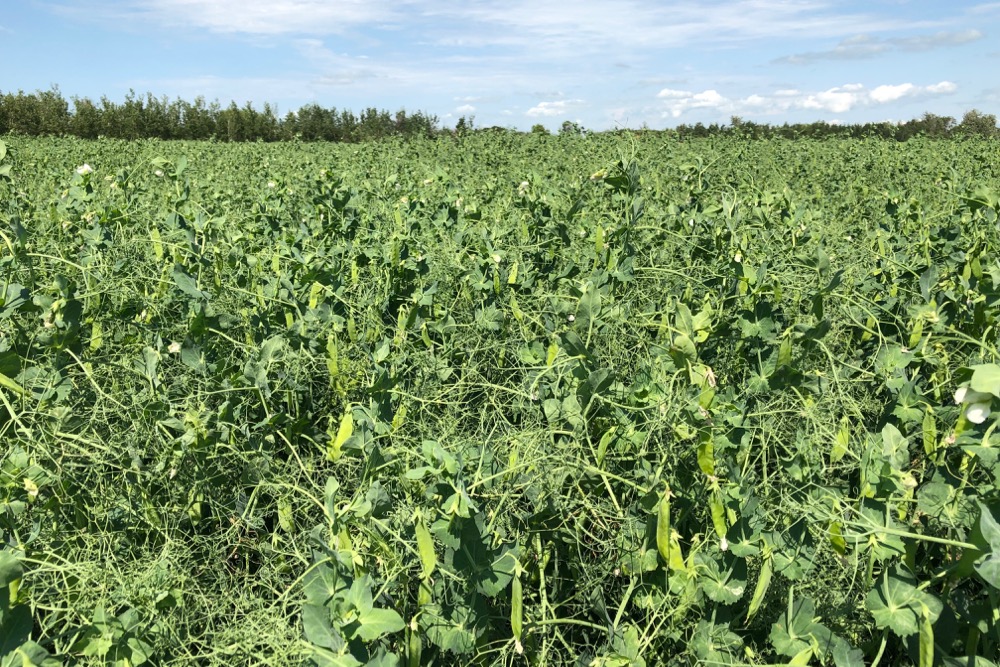Pulse weekly outlook: Seeding to start in Manitoba, Saskatchewan
Saskatchewan lentils expected to lose acres to wheat, canola
| 2 min read

File photo of a pea crop south of Ethelton, Sask. on Aug. 1, 2019. (Dave Bedard photo)
MarketsFarm — With the calendar turning to May and temperatures expected to surpass 20 C this week, pulse seedings are set to begin for parts of Manitoba and Saskatchewan.
“Right now, we’re still in a bit of a holding pattern,” said Manitoba provincial pulse specialist Dennis Lange. “We haven’t really had much for drying. Now we’re going to get some warmer temperatures this week, so things will change a lot. Into next week, we’ll start to see the first seeders going into the fields.”
In Saskatchewan, provincial pulse specialist Dale Risula said he wouldn’t be surprised to see growers in the southwest part of the province already seeding, as he has seen seeding activity outside Regina.
“There are (some growers) that have started out there already, but it would be very minimal,” he said. The province had “a lot of snowfall and precipitation in the last little while, which I think made up for some dry areas that were under dry spells. But there’s a little bit of optimism in some areas.”
Statistics Canada (StatCan) last Wednesday released its first survey-based seeding intentions report for the 2023-24 marketing year. While the survey was conducted in December and January, two months earlier than in past reports, both Lange and Risula agreed the estimates were fair representations of their respective provinces’ plans for pulse crops.
In Manitoba, soybean area is set to rise by 37.3 per cent from last year to 1.559 million acres, the third-largest crop in the province behind canola and wheat. However, dry peas and edible beans are set for declines to 185,300 (down 1.7 per cent) and 115,800 (down 7.7 per cent) acres, respectively.
Lange agrees there will be an increase in soybean acres, but not to the extent reported by StatCan.
“Some of my earlier projections are into the 1.2 (million to) 1.3 million-acre range. Sometimes it depends on the sample size and what area you’re sampling (from),” he said. “I think (the total) will be more into the 1.2-million range.”
Saskatchewan’s top two pulse crops will see declines in seeding area this year as lentils are projected to decline 7.7 per cent to 3.479 million acres, while dry peas will drop 6.4 per cent to 1.694 million.
Risula attributed the drop in dry pea acreage to the potential for higher yields in India and less demand from China. He also said some lentil acres will make way for Saskatchewan’s top two crops.
“I anticipate there will be a lot of lentil acres losing out to wheat or canola,” he said.
However, chickpeas (up 16.2 per cent to 235,700 acres), soybeans (up 64.1 per cent to 75,400) and fababeans (up 56 per cent to 43,200) all showed projected gains.
For chickpeas, “we kind of lost out to (Montana and North Dakota) for a year or two. They didn’t do that well (last year),” Risula added. “Our chickpea growers are trying to re-establish that (export) market into the U.S.”
— Adam Peleshaty reports for MarketsFarm from Stonewall, Man.


